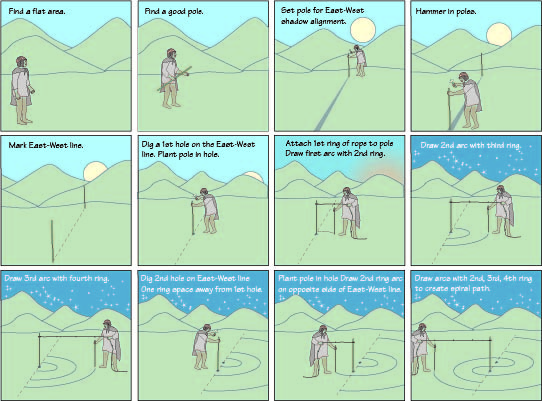Nazca Lines: Spirals and Labyrinths
This will be my only post for 2021 as I’ve been working on my new book all to do with visualization and imagination in the arts and architecture; through time (almost complete). This post is from my 2020 paper given at Bridges Math/Art 2020. Two animations and one illustration sequence.
The Nazca giant-geoglyph spirals that are etched into the coastal plain desert of southern Peru suggest an easy construction method using a rod and a rope—where the rope is knotted at set path width increments. The rod is pushed into the ground and the rope freely rotated around it—and semi-circular paths are cut at each knot position. The rod is then moved one path width and a new set of semi-circular paths are cut—creating a Nazca spiral. The method can be further developed to create labyrinths—and can be used to create garden, field, sacred, or exhibition labyrinths. See my paper Labyrinths: Mysteries and Methods: http://archive.bridgesmathart.org/2020/bridges2020-345.html
